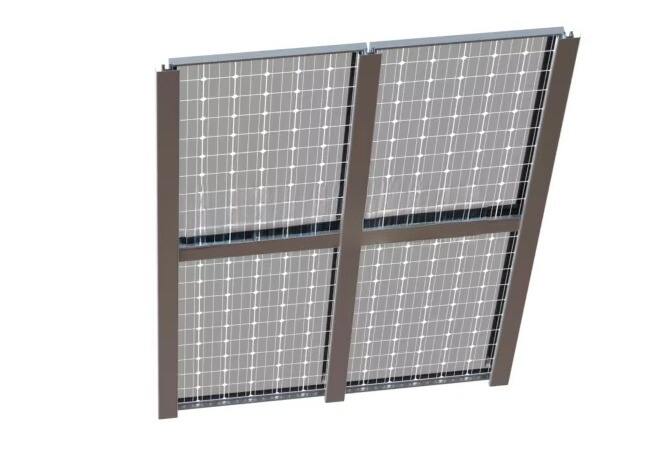Соларне шине су хоризонтални, линеарни елементи који чине примарни оквир за причвршћивање соларних панела у системима који се монтирају на кров и на земљу. Ове шине служе као међувеза између носеће конструкције (нпр. кровних носача, стубова за системе на земљи) и соларних панела, пружајући стабилну и прилагодљиву платформу за инсталацију панела. Израђене су од алуминијумске легуре високе квалитете (често се користи 6063-T5) или цинканих челичних профила. Соларне шине су пројектоване тако да имају добар однос између лагане конструкције и високе чврстоће, како би могле да издрже тежину соларних панела (обично 15–25 kg по панелу) као и оптерећења изазвана околином (снег, ветар). Алуминијумске шине често су анодизоване ради повећања отпорности на корозију, док се челичне шине обрађују цинкањем или прашком ради заштите од рђе, оба решења обезбеђују век трајања од 25 година и више. Соларне шине карактерише Т-жлеб конструкция – уздужни жлбеви дуж њихове дужине који омогућавају лако причвршћивање клипова за панеле, средњих и крајњих клипова. Овај систем жлбева омогућава прилагођавање, тако да монтажери могу прецизно да позиционирају панеле (са тачношћу од ±5 mm) ради оптималног поравнања и изложености сунцу. Шине су доступне у стандардним дужинама (3–6 метара) како би се минимизирао број спојева, чиме се смањује време инсталације и могући извори кварова. У системима на крову, соларне шине се монтирају паралелно са гредама кровног носача, мало подигнуте ради одводње воде, док се у системима на земљи причвршћују за хоризонталне попречне греде које носе вертикални стубови. Размак између шина (обично 1–1,5 метра) одређен је димензијама панела, како би се обезбедила равномерна расподела тежине. Соларне шине испуњавају међународне стандарде као што су IEC 62715 и UL 2703, а тестови оптерећења потврђују да могу да издрже статичка оптерећења до 5 kN/м² (снег) и динамичка ветровна оптерећења до 140 km/h. Без обзира да ли се користе у системима за становање, комерцијалне сврхе или на велико, соларне шине пружају прилагодљив и поуздан темељ који поједностављује инсталацију панела, обезбеђује структурну интегритет и доприноси дугорочној ефикасности соларног система.
